Step forward: an eco-friendly urban park outside Paris stacked with playful prefabs
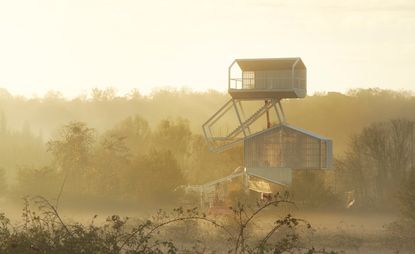
This vast green space in Carrières-sous-Poissy used to be little more than a wasteland. Wild and overgrown, it was the type of place, says architect Alessandra Cianchetta, where people would go to burn cars. Though large, it was certainly not a destination; travelling from the train station, she had to show the taxi driver a map to direct him there.
Cradled in an elbow of the Seine, 30km north-west of Paris, the land is an L-shaped tract covering 113 hectares, straddling nature and the city. On one side there’s the town, with its modest suburban houses and some rougher housing projects. The river, dotted with barges and houseboats, flanks the opposite side. Across the water stands Le Corbusier’s Villa Savoye and the bourgeois homes of Saint-Germain-en-Laye.
The population of Carrières-sous-Poissy is growing quickly as part of the Grand Paris development project. As for this green space, public authorities are spending close to €25m to turn it into an eco-friendly public park for the locals, dubbed Le Parc du Peuple de l’Herbe (which translates roughly to ‘Park of the People of the Grass’).
In early 2011, they hired the landscape architect Agence TER to create walkways and leisure areas, clean up the soil and plant thousands of shrubs and trees, all while maintaining the natural anarchy of the site. That same year, Cianchetta’s Paris-based architecture firm AWP (Marc Armengaud, Matthias Armengaud and Cianchetta) and Swiss architects HHF (Tilo Herlach, Simon Hartmann and Simon Frommenwiler) won a competition to create the park’s permanent structures. They designed three main elements and 11 follies, or what they call ‘small, surreptitious constructions’, to guide the flow of people and offer activities such as yoga or theatre.
Using prefab wood structures like preschoolers’ building blocks, the architects came up with a design that is both budget-friendly and elegant. Underscoring the urban/maritime duality of the site, they took the pentagon shape of a typical suburban house – a box with a peaked roof – then repeated and combined it. The structures are clad in vertical strips of timber and painted white in sections. Each one has a recessed base, giving the impression that they are floating above the ground like the barges on the nearby Seine.
The main building – an exhibition centre and new insect museum – comprises five of these house-shaped structures. They intersect at unlikely angles, so that an exposed beam holding up one module often extends into an adjoining one, finishing in unexpected groupings of columns, ‘like a forest’.
Within, the building is modern and light-filled, with high ceilings and white-varnished timber walls panelled in wide boards or narrow strips. A wooden brise soleil covers the large, house-shaped glass wall in the main exhibition space, filtering sunlight in parallel ribbons across the pale grey resin floor.
A glasshouse will hold a live butterfly exhibit.
Cianchetta takes pride in the fact that though this is a cost-conscious public commission, they didn’t cut corners on details, using high-quality door handles from Switzerland and attractive lighting even in places most people won’t see it, such as the boiler room. When evening falls, neon tubes on the ceiling make the building glow like a lantern. ‘We should not treat the public like they can’t be sophisticated,’ she says. ‘If you give people places and things that are beautiful, they will feel it is beautiful, and it will be much better than having fakely democratic crap.’
What’s visible outside is as important as what’s inside, and the architects took great care in how they presented views of the park. Cianchetta, an Italian, says, ‘I’m interested in landscape, in viewing, in Antonioni’s [1966 film] Blow-Up and the scene in Maryon Park, this idea of framing. Le Corbusier was also obsessed with framing things. So the plan of this building, with all these angles, is the result of this desire to orientate different openings towards different parts of the park.’
She leads the way through the muddy field to the most spectacular feature of the project, a white steel and wood observatory tower, 12m high. It consists of four house-shaped boxes, piled one on top of another to look like a few are sliding to the ground. Exposed staircases zigzag up three levels and glassless windows offer 360-degree views over the park.
The park’s official opening is next December. Still to be built are the guinguette (a waterside restaurant on stilts with a terrace for dancing) and the follies, which may or may not come to fruition. Cianchetta says the whole project nearly died a little more than a year ago due to the struggling economy.
In an era of government cutbacks, creating a public park filled with surreptitious structures might strike some as folly. Fortunately, there is another point of view.
As originally featured in the April 2016 issue of Wallpaper* (W*205)

The Exhibition Centre and Insect Museum comprises five house-shaped structures, which intersect at unlikely angles

Neon tubes make the building glow like a lantern come evening
INFORMATION
For more information, visit the Sein City Park website
Photography: Julien Lanoo
Wallpaper* Newsletter
Receive our daily digest of inspiration, escapism and design stories from around the world direct to your inbox
-
 The best fashion moments at Milan Design Week 2024
The best fashion moments at Milan Design Week 2024Scarlett Conlon discovers the moments fashion met design at Salone del Mobile and Milan Design Week 2024, as Loewe, Hermès, Bottega Veneta, Prada and more staged intriguing presentations and launches across the city
By Scarlett Conlon Published
-
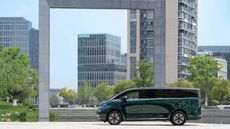 LEVC’s L380 is a truly magnificent minivan
LEVC’s L380 is a truly magnificent minivanThe London Electric Vehicle Company’s L380, is a magnificent minivan designed for upscale long-distance travel, as the maker of the London Taxi branches out into all-purpose EVs
By Jonathan Bell Published
-
 Enjoy ocean and jungle bliss at Bespoke Tulum’s residences in Mexico
Enjoy ocean and jungle bliss at Bespoke Tulum’s residences in MexicoBespoke Tulum is an exclusive hospitality complex designed by Muro Rojo Arquitectura on Mexico’s Caribbean coastline
By Sofia de la Cruz Published
-
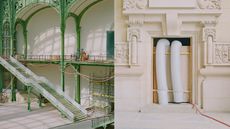 Grand Palais restoration in Paris through the lens of champion fencer Enzo Lefort
Grand Palais restoration in Paris through the lens of champion fencer Enzo LefortAs Paris’ Grand Palais prepares to reopen following extensive restoration by Chatillon Architectes, we visit the site with champion fencer and photographer Enzo Lefort, who documented the space ahead of the Olympic Games 2024
By Ellie Stathaki Published
-
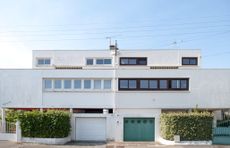 Royan Architecture Month showcases French modernism by the sea
Royan Architecture Month showcases French modernism by the seaRoyan Architecture Month 2024 launches in the French city, where many travel to see midcentury builds by the sea, from Notre Dame church to Palais des Congrès
By Stacy Suaya Published
-
 Dip into the Paris pools and swimming culture enriching the 2024 Olympic Games
Dip into the Paris pools and swimming culture enriching the 2024 Olympic GamesParis pools, in the Olympics and beyond, have inspired fun, wellness and a love of sports in the French capital
By Ellen Himelfarb Published
-
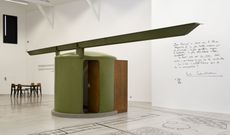 Jean Prouvé’s House of Better Days on show at Galerie Patrick Seguin in Paris
Jean Prouvé’s House of Better Days on show at Galerie Patrick Seguin in ParisThe Maison Les Jours Meilleurs, or House of Better Days, by Jean Prouvé is explored in a new show at Galerie Patrick Seguin in Paris
By Harriet Thorpe Published
-
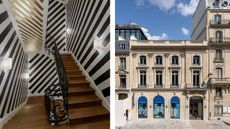 Hauser & Wirth Paris by Laplace is a winning restoration in the Wallpaper* Design Awards 2024
Hauser & Wirth Paris by Laplace is a winning restoration in the Wallpaper* Design Awards 2024Hauser & Wirth Paris by Laplace sees the architectural agency named Best Restoration Kings, breathing new life into an 1877 hôtel particulier near the Champs-Elysées
By Amy Serafin Published
-
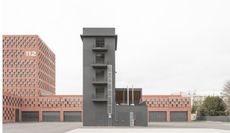 A fire station cuts a bold figure in the city of Rennes
A fire station cuts a bold figure in the city of RennesThis fire station by LAN becomes a new landmark for Rennes, France
By Ellie Stathaki Published
-
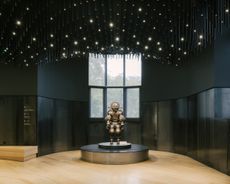 A refreshed Musée National de la Marine shows off its expanded exhibition spaces in France
A refreshed Musée National de la Marine shows off its expanded exhibition spaces in FranceMusée National de la Marine in France has been brought to the 21st century by a team comprising h2o Architectes, Snøhetta and exhibition designers Casson Mann
By Clare Dowdy Published
-
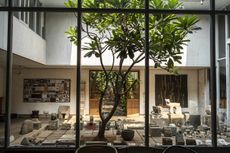 Studio Mumbai exhibition at Fondation Cartier explores craft, architecture and ‘making space’
Studio Mumbai exhibition at Fondation Cartier explores craft, architecture and ‘making space’A Studio Mumbai exhibition at Paris’ Fondation Cartier explores the trailblazing Indian practice’s inspired, hands-on approach
By Amy Serafin Published